
Depending on the nature of the work a vehicle maintenance workshop carries out, it will need the proper tools and machinery to do the job.
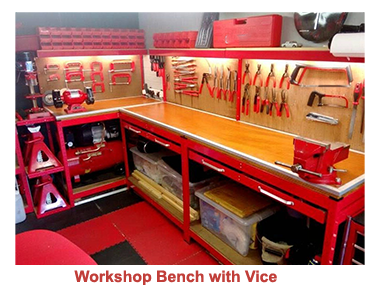 Most car maintenance workshops. only take on basic projects such as engine repairs and upkeep, bodywork and painting, underbody maintenance, auto electrics or speciality activities.
Most car maintenance workshops. only take on basic projects such as engine repairs and upkeep, bodywork and painting, underbody maintenance, auto electrics or speciality activities.
 Each of these departments require different skill sets as well as the proper tools, while there are some types of machinery and equipment that are necessary for a workshop to handle any maintenance project, there is also a long list of requirements of specialist tools that a vehicle maintenance workshop will require to handle specific tasks. Here is a list of just some of the machinery and equipment required:
Each of these departments require different skill sets as well as the proper tools, while there are some types of machinery and equipment that are necessary for a workshop to handle any maintenance project, there is also a long list of requirements of specialist tools that a vehicle maintenance workshop will require to handle specific tasks. Here is a list of just some of the machinery and equipment required:
Machinery and Equipment for maintaining Engines and Gearboxes
make more complicated mechanical processes more accurate and efficient:
• Engine Stands: Strong, rotating stands that are made to hold engines securely while they are being rebuilt.
• Cylinder Head Resurfacing Machines: These machines are made to fix twisted or broken heads.
• Valve grinders and seat cutters are quite important for making sure that combustion chambers seal perfectly.
• Hydraulic Presses: Used to push bearings, bushings, and suspension parts in or out.
• Transmission Jack: Every vehicle maintenance workshop dealing with transmission should have a transmission jack. These jacks are specifically designed for servicing a vehicle’s transmission
• Gearbox Jacks—These tools are made to make it safe to lower and raise gearboxes during both the removal and installation processes.
Oil Drain and Caddy: When planning to work with vehicles, it's essential to be prepared for the safe handling and disposal of used oil. A press enables you to effectively drain old oil filters, but it's essential to have a proper disposal method for the unwanted oil as well. Oil drains and caddies are essential tools for efficiently removing and transporting oil from vehicles in your shop.
•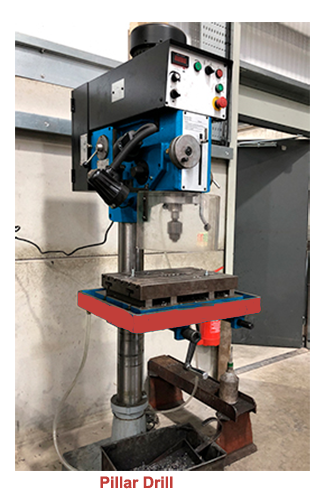 Pillar Drill (Drill Press) • Ensures stable and precise drilling in metal components • Ideal for fabricating brackets, mounts, and creating accurate holes •
Pillar Drill (Drill Press) • Ensures stable and precise drilling in metal components • Ideal for fabricating brackets, mounts, and creating accurate holes •
Grinding Machine (Bench or Pedestal Grinder) • Sharpens tools, cleans metal edges, and smooths components • Essential for shaping or preparing parts during repair and fabrication
• Engine Test Bed (Dynamometer) • Operates engines externally under load conditions • Utilised for diagnostics, tuning and performance evaluations • Gearbox Test Bench • Assesses gearboxes and drivetrains off-vehicle • Confirms proper functionality prior to reinstallation
Machinery and Equipment for maintaining Vehicle Underbodies
Brakes.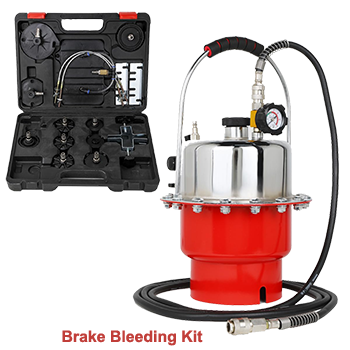 The brakes are in a constant state of deterioration, otherwise they would not be doing their job properly. Any kind of maintenance service must always include a thorough check of brake components, such as pads and drums.
The brakes are in a constant state of deterioration, otherwise they would not be doing their job properly. Any kind of maintenance service must always include a thorough check of brake components, such as pads and drums.
Key machines include:
• Brake bleeding systems are a must to have as they purge air from hydraulic lines with precision, ensuring consistent pedal response.
• Pressure testers which verify hydraulic integrity of master cylinders, calipers, and hoses.
• Brake lathes are used to renew the surface of brake discs and drums, restoring true contact surfaces and eliminating vibration. Modern on-car brake lathes allow machining without dismantling, saving time.
These machines are among the many that any maintenance workshop should have at their disposal to ensure braking systems are properly serviced and maintained.
Suspension work requires heavy-duty machinery designed to handle high spring tensions and robust metal components:
• Spring compressors is an important piece of equipment for any workshop specialising in the maintenance of a vehicle’s suspension, used to r safely remove and install coil springs
• Shock absorber testers are used to simulate road conditions enabling precise diagnosis of worn units.
• Wheel alignment systems are the latest addition to any vehicle suspension workshop. Computerised, these four-wheel alignment rigs use laser or camera technology to measure toe, camber, and caster angles. providing previously unknown levels of accuracy.
The axle assembly forms the backbone of underbody mechanics, supporting weight while at the same time transmitting power to the wheels. The type of machinery used to handle axle maintenance are usually large and heavy while providing high levels of precision.
These include:
• Bearing pullers and hydraulic extractors used to provider safe removal of wheel bearings and axle components without causing damage.
• Torque wrenches and calibration rigs, although often handheld, this equipment is a vital feature in any axle maintenance workshop, ensuring the correct - preload on both bearings and axle nuts.
• Driveshaft balancing machines have role of testing and correcting driveshaft alignment thus eliminating vibration and prolonging component life.
Machinery and Equipment for maintaining and repairing Tires and Wheels
Having the correct tools for servicing tires and wheels is a handy addition to any vehicle maintenance workshop.
• Tyre Changers come in semi-automated and completely automatic versions, designed to quickly and easily remove and fit tires.
• Wheel Balancers are designed to detect imbalances and figure out where to allow the correct weight ratio.
•  Machines for Bleeding Brake carry out the important function of making adjustments to brake fluid more accurate and efficient.
Machines for Bleeding Brake carry out the important function of making adjustments to brake fluid more accurate and efficient.
• Bead Breakers make it easier to remove tires from their rims.
Machinery and Equipment for maintaining Auto Electric Systems
Auto-electrics has evolved from simple wiring looms and dynamos to today’s highly integrated systems controlling everything from engine management to infotainment. A dedicated auto-electric workshop must therefore be equipped with specialised machinery that supports both diagnosis and repair. Unlike purely mechanical shops, the core of such a workshop is not heavy lifting gear but advanced electronic testing, programming, and service machines.
Diagnostic and Scanning Equipment
At the heart of modern auto-electrics lies accurate fault detection. There are a number if recently developed machines that will make this technically challenging task very simple. These include:
• OBD-II and manufacturer-specific scanners, which can be either handheld or bench-based units, capable of extracting data from a vehicle’s onboard computer, pulling fault codes, live data streams, and system logs.
• Oscilloscopes which re essential for viewing voltage waveforms, identifying issues with sensors, ignition patterns, or CAN-bus communications. This range of equipment is obviously suitable for vehicles produced in the modern era or whose auto-electric system has undergone a major upgrade.
Without these tools, electronic problems would be guesswork rather than science.
For day-to days issues. a maintenance workshop must have access to Battery and Charging System Machinery- As energy supply is the lifeblood of any vehicle’s auto-electrics system, in order to maintain batteries, alternators, and the many other auto-electric system related systems, a workshop must include the following equipment:
• Battery testers and conductance analysers capable of rapidly determine state of charge, health, and cranking ability.
• 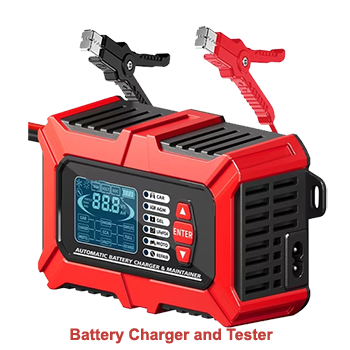 Battery chargers and maintainers, especially microprocessor-controlled chargers that are capable of handling traditional lead-acid, AGM, and lithium batteries while adapting to each of their chemistries safely.
Battery chargers and maintainers, especially microprocessor-controlled chargers that are capable of handling traditional lead-acid, AGM, and lithium batteries while adapting to each of their chemistries safely.
• Alternator and starter motor test benches designed to allow bench testing of units temporarily removed from the vehicle. These machines are capable of simulating load conditions and measuring current output.
Wiring and Harness Service Tools
. Machinery to support harness repair are a very vital part of an auto-electric shops tool kit. Vehicle wiring loom to wear, corrosion, and breakage.
This equipment includes
• Wire stripping and crimping machines – Semi-automatic, these units guarantee consistent, factory-grade terminations when compared with hand tools.
•  Soldering and heat-shrink stations – Temperature-controlled soldering stations paired with hot-air guns that provide durable electrical connections and insulation.
Soldering and heat-shrink stations – Temperature-controlled soldering stations paired with hot-air guns that provide durable electrical connections and insulation.
Lighting and Accessory System Service
Auto-electric workshops should be capable of handling the maintenance and repair of headlamps, indicators, and comfort electronics. Key machinery includes:
• 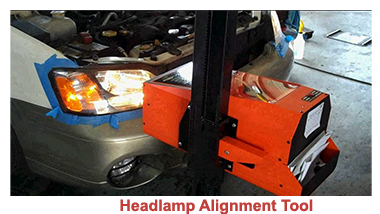 Headlamp alignment machines – Precision optical testers that ensure beam patterns meet legal standards.
Headlamp alignment machines – Precision optical testers that ensure beam patterns meet legal standards.
Machinery and Equipment for Welding and Fabrication
Maintenance workshops take on bodywork repairs or required to fabricate parts will require access to welding machinery.
•The general concesus is that MIG welders are the best choice for fixing sheet metal repairs on cars.
• 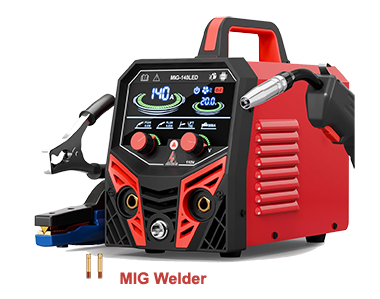 TIG Welders are more suited to cutting precise pieces made of aluminium or stainless steel.
TIG Welders are more suited to cutting precise pieces made of aluminium or stainless steel.
• Spot welders are best suited for making quick, factory-style connections in sheet metal.
• Plasma Cutters: These tools are made to cut through thicker metals with accuracy and speed. • Bench grinders and belt sanders are used to shape, sharpen, or smooth out metal parts.
Machinery and Equipment Machinery for maintaining Bodywork
For workshops that focus on repairing vehicles after collisions :
• Panel beating tools with hydraulic rigs, which are devices that can pull and push to realign broken frames.
•Hydraulic Press: A commercial-grade press is essential for any maintenance workshop in metalworking. Hydraulic presses are essential for separating rusted parts and straightening components that have become bent out of shape as well as handling pressing of bearings, bushings, and universal joints in and out of assemblies.
For workshops that focus on vehicle repainting:Machinery and Equipment for maintaining Paintwork
• Spray Booths—These are unique places made to get professional-looking paint jobs. To meet safety and health requirements, paint booths must have built-in extraction and filtering systems.
• Paint Mixing Machines: Make sure that the colours match exactly and are all the same.
• A new and handy edition to any paint shop are infrared paint dryers that make the process of curing paint more effective.
 To handle even some of these tasks, an efficient vehicle maintenance shop, will need to carefully choose the most suitable combination of equipment and machinery. The smaller the workshop, the more carefully the owner/operator will need to choose their investments. From the outset, choosing the correct tools will go a long way in boosting productivity and providing dependable service.
To handle even some of these tasks, an efficient vehicle maintenance shop, will need to carefully choose the most suitable combination of equipment and machinery. The smaller the workshop, the more carefully the owner/operator will need to choose their investments. From the outset, choosing the correct tools will go a long way in boosting productivity and providing dependable service.
eq4